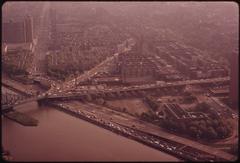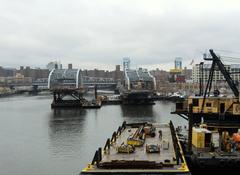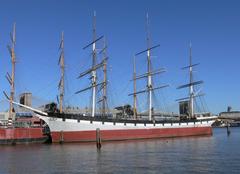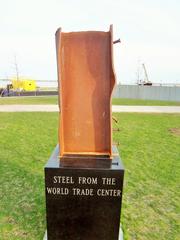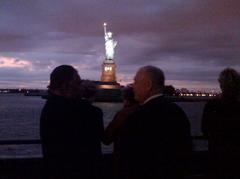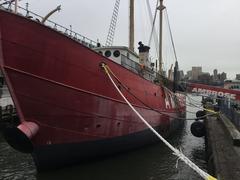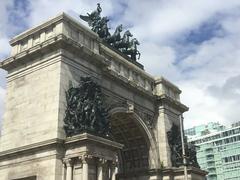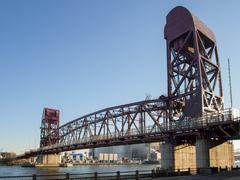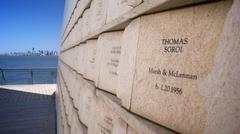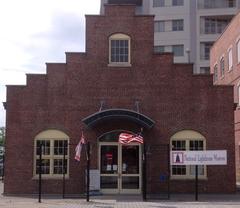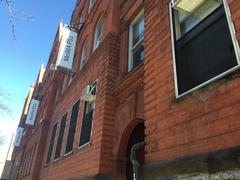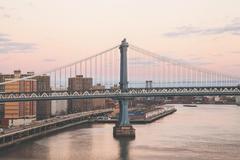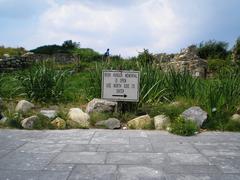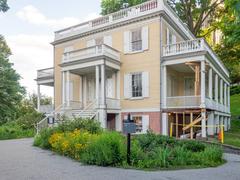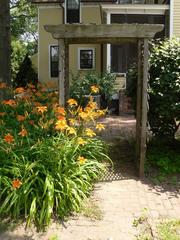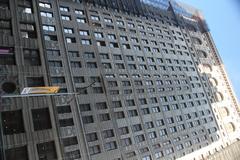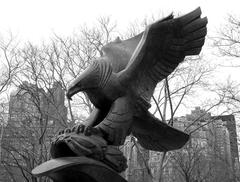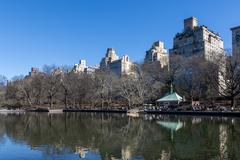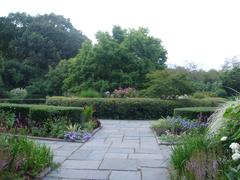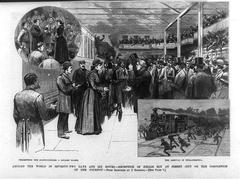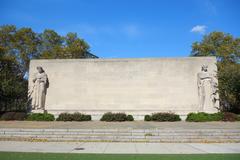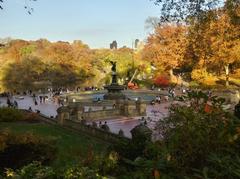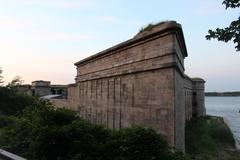
Comprehensive Guide to Visiting Macombs Dam Bridge, New York City, United States
Date: 01/08/2024
Introduction
The Macombs Dam Bridge in New York City is not just a crucial infrastructure linking Manhattan and the Bronx; it is a historical and architectural gem that has stood the test of time. This bridge, which spans the Harlem River, is the third oldest major bridge still in operation in the city and serves as a testament to the engineering feats of the late 19th century. Initially constructed to support Robert Macomb’s milling business in the early 19th century, the bridge has evolved through various phases, reflecting the dynamic history and growth of New York City. Its current steel structure, completed in 1895, was designed by the renowned engineer Alfred Pancoast Boller and remains a vital transportation link today (Historic Structures, Wikipedia). This guide will delve deep into the rich history, architectural significance, and practical visitor information for those planning to explore this iconic bridge.
Table of Contents
- [Introduction](#introductionintroduction)
- [History of Macombs Dam Bridge](#history-of-macombs-dam-bridgehistory-of-macombs-dam-bridge)
- [Early Beginnings and Construction](#early-beginnings-and-constructionearly-beginnings-and-construction)
- [Controversies and Demolition](#controversies-and-demolitioncontroversies-and-demolition)
- [The Modern Macombs Dam Bridge](#the-modern-macombs-dam-bridgethe-modern-macombs-dam-bridge)
- [Architectural and Engineering Significance](#architectural-and-engineering-significancearchitectural-and-engineering-significance)
- [Historical Events and Rehabilitation](#historical-events-and-rehabilitationhistorical-events-and-rehabilitation)
- [Modern Usage and Traffic](#modern-usage-and-trafficmodern-usage-and-traffic)
- [Cultural and Historical Recognition](#cultural-and-historical-recognitioncultural-and-historical-recognition)
- [Visitor Information](#visitor-informationvisitor-information)
- [Visiting Hours and Tickets](#visiting-hours-and-ticketsvisiting-hours-and-tickets)
- [Travel Tips](#travel-tipstravel-tips)
- [Nearby Attractions](#nearby-attractionsnearby-attractions)
- [Accessibility](#accessibilityaccessibility)
- [FAQ](#faqfaq)
- [Conclusion](#conclusionconclusion)
- [Stay Up to Date](#stay-up-to-datestay-up-to-date)
History of Macombs Dam Bridge
Early Beginnings and Construction
The origins of the Macombs Dam Bridge date back to the early 19th century. In 1813, Robert Macomb, a local businessman, petitioned the New York State Legislature for permission to construct a dam across the Harlem River near 155th Street in Manhattan. The purpose of this dam was to create a mill pond for his milling business. The legislature granted this permission in 1814, with the stipulation that a lock be included to allow vessels to pass through (Historic Structures).
The dam, which also functioned as a toll bridge, was completed in 1815. However, the narrow width of the lock, measuring only 7 by 7 feet, limited its capacity. By the mid-19th century, the dam was no longer used for its original purpose (Wikipedia).
Controversies and Demolition
The dam quickly became a point of contention due to its impact on the navigability of the Harlem River. In September 1839, local residents, frustrated by the obstruction, breached the dam over several days. This act was later upheld by the New York Supreme Court, which deemed the dam a public nuisance (Wired New York).
In 1858, the New York State Legislature directed the city and Westchester County to remove the dam and replace it with a new toll-free bridge. This led to the construction of the Central Bridge, completed in 1861. The new bridge, built of wood, featured a 210-foot central draw span and two Howe truss approach spans. However, it required frequent maintenance and modifications due to the rotting of its wooden components (Historic Structures).
The Modern Macombs Dam Bridge
The current steel span of the Macombs Dam Bridge was constructed between 1892 and 1895, designed by the eminent structural engineer Alfred Pancoast Boller. This bridge, along with the 155th Street Viaduct, was a significant municipal undertaking and a remarkable feat of engineering for its time. The bridge’s steel central swing span was considered the world’s heaviest movable mass at the time of its construction (Wikipedia).
The bridge officially opened on May 1, 1895, and was initially named the Central Bridge. However, this name never gained popular usage, and it was officially renamed the Macombs Dam Bridge in 1902 (Bridges NYC).
Architectural and Engineering Significance
The Macombs Dam Bridge is the third-oldest major bridge still operating in New York City, following the Brooklyn and George Washington Bridges. It is also the city’s oldest intact metal truss, swing-type bridge, a design commonly used along the Harlem River between the 1880s and 1910 (Historic Bridges).
The bridge’s total length is 2,540 feet, including its approach viaducts. The 155th Street Viaduct, built concurrently with the bridge, is a steel structure composed of deck girder spans carried on two parallel rows of steel columns. The viaduct spans the valley from the heights above Harlem to the Harlem River (Bridges NYC).
Historical Events and Rehabilitation
Throughout its history, the Macombs Dam Bridge has undergone several rehabilitations to maintain its structural integrity and historical significance. A major rehabilitation project began in 1999 and lasted through 2004. This project included repairing and repainting the overall structure, replacing the decks, refurbishing the draw mechanism’s electrical system, and replacing trusswork over Metro-North, CSX, the Major Deegan Expressway, and the Harlem River Drive (Bridges NYC).
Modern Usage and Traffic
As of 2019, the Macombs Dam Bridge carries New York City Transit’s Bx6 and Bx6 SBS bus routes. The New York City Department of Transportation reported an average daily traffic volume of 38,183 vehicles in both directions, with a peak of 55,609 in 1957. Between 2000 and 2014, the bridge opened for vessels 32 times (Wikipedia).
The bridge connects the intersection of 155th Street and Adam Clayton Powell, Jr. Boulevard in Manhattan with Jerome Avenue and 161st Street near Yankee Stadium in the Bronx. It serves as a vital link between upper Manhattan and the Bronx, providing both vehicular and pedestrian access (Wired New York).
Cultural and Historical Recognition
The Macombs Dam Bridge and the 155th Street Viaduct were designated as New York City Landmarks in 1992, recognizing their historical and architectural significance. The bridge’s ornate design and engineering prowess have made it a notable landmark in the city’s landscape (Historic Bridges).
Visitor Information
Visiting Hours and Tickets
The Macombs Dam Bridge is accessible 24/7, and there are no ticket requirements to visit the bridge itself. However, if you plan to explore nearby attractions like Yankee Stadium, check their respective visiting hours and ticketing information.
Travel Tips
- Public Transport: The bridge is easily accessible via the Bx6 and Bx6 SBS bus routes.
- Driving: For those driving, parking facilities are available near Yankee Stadium.
- Best Time to Visit: Early morning or late afternoon provides the best lighting for photography.
Nearby Attractions
- Yankee Stadium: Just a short walk from the bridge, it’s a must-visit for sports fans.
- Highbridge Park: Offers beautiful scenic views and walking trails.
- Bronx Museum of the Arts: Showcases contemporary art exhibitions.
Accessibility
The bridge is pedestrian-friendly, with pathways for walkers and cyclists. It also accommodates vehicular traffic, making it accessible for all types of visitors.
FAQ
Q: Are there any guided tours available for the Macombs Dam Bridge? A: Currently, there are no official guided tours for the bridge, but nearby attractions like Yankee Stadium offer tours.
Q: What is the best time to visit the Macombs Dam Bridge for photography? A: Early morning and late afternoon offer the best natural lighting for photography.
Q: Is the Macombs Dam Bridge wheelchair accessible? A: Yes, the bridge has pathways that are accessible for wheelchairs.
Q: Are there any special events held at the Macombs Dam Bridge? A: While the bridge itself does not host events, nearby attractions like Yankee Stadium frequently hold events that can be enjoyed in conjunction with a visit to the bridge.
Conclusion
The Macombs Dam Bridge stands as a testament to New York City’s rich history and engineering achievements. Its evolution from a controversial dam to a vital transportation link highlights the dynamic nature of urban development and the importance of preserving historical structures for future generations. Plan your visit to this iconic bridge and explore the rich history and attractions surrounding it.
Stay Up to Date
For more updates and information on New York City’s historical sites, download the Audiala mobile app, check out our related posts, or follow us on social media.
References
- Historic Structures, n.d. Historic Structures
- Wikipedia, n.d. Wikipedia
- Wired New York, n.d. Wired New York
- Bridges NYC, n.d. Bridges NYC
- Historic Bridges, n.d. Historic Bridges
